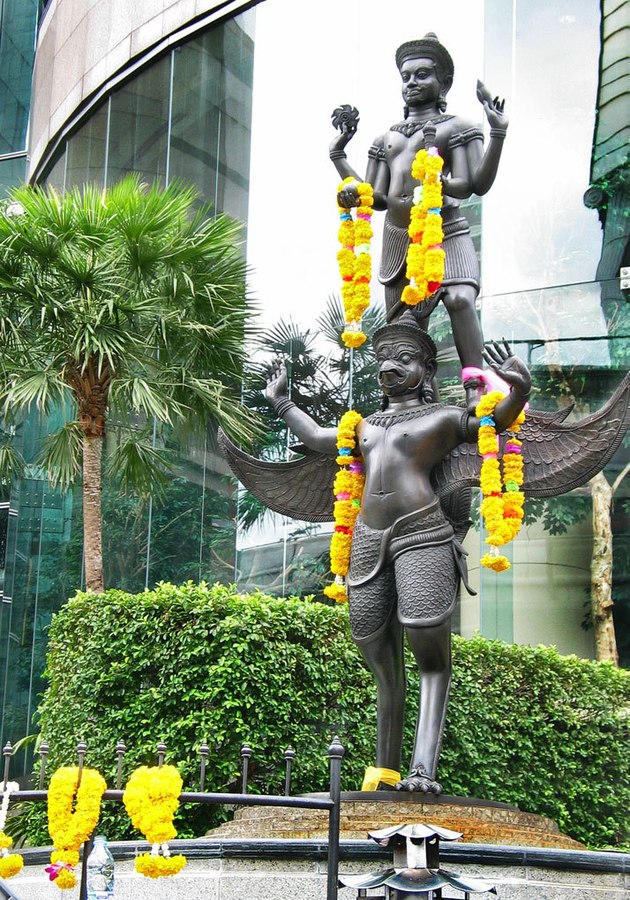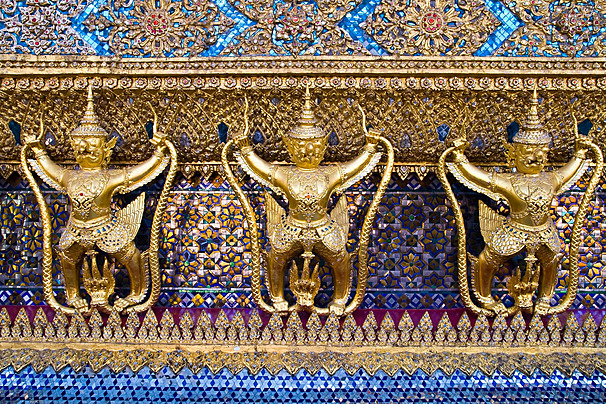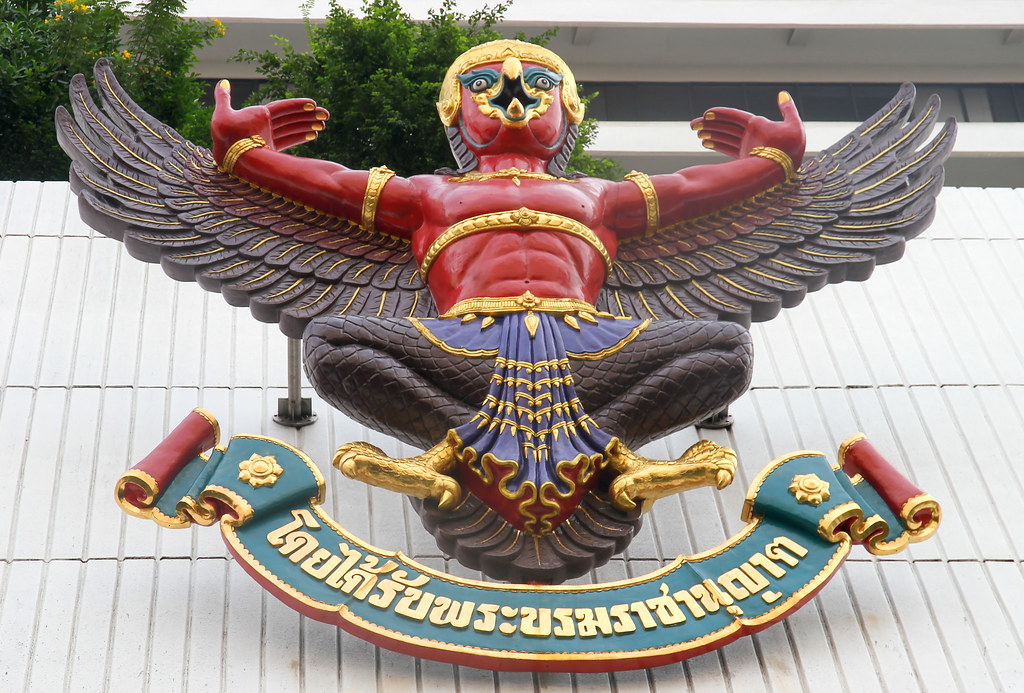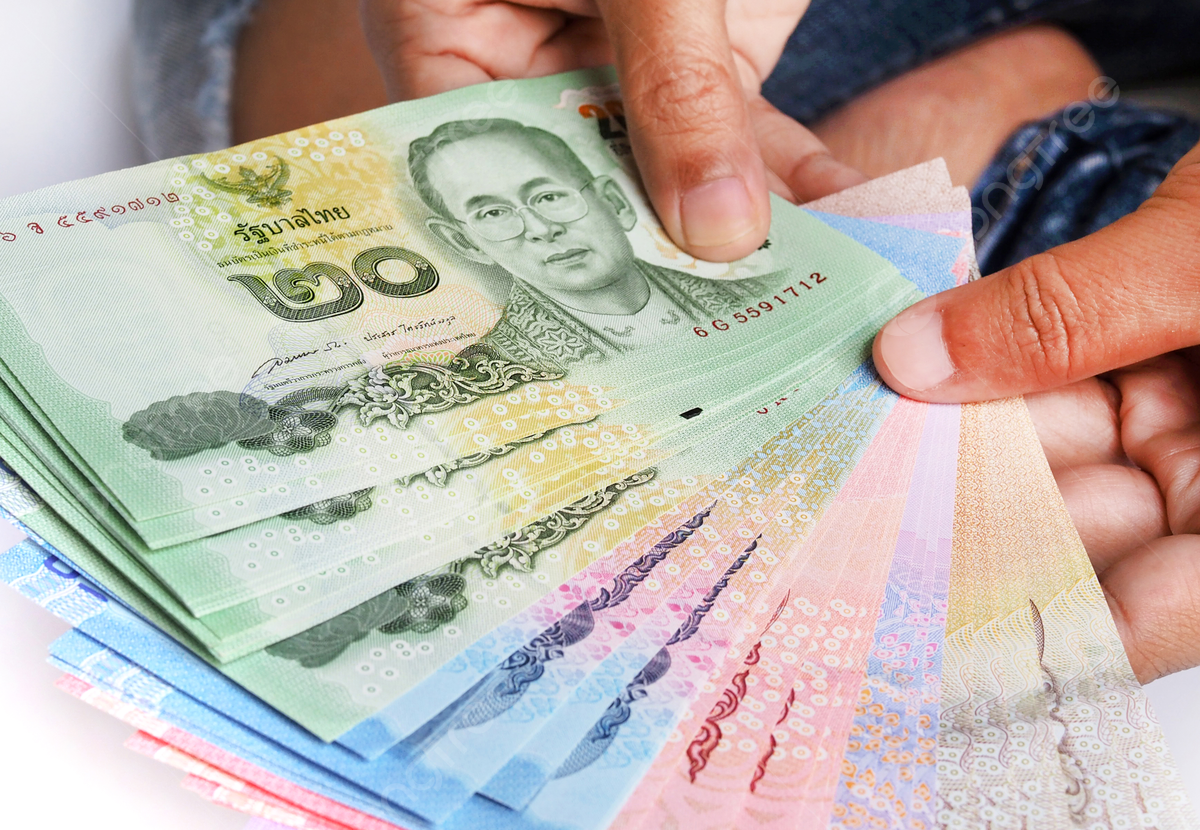If you've ever held a Thai baht, there's a possibility that you've already met Garuda, perhaps without realizing it.
This majestic winged figure is more than just a decoration. He is Thailand’s national emblem and a symbol of royal authority. Garuda is also deeply rooted in the culture and history of the Land of the White Elephant.
What is Garuda?

Known as Phra Khrut Pha in Thai, Garuda is a mythological creature that is half-bird and half-human. In many artistic depictions, he has the head, beak, claws, and wings of an eagle but the body of a man. This figure originates from Hindu and Buddhist mythology and is believed to be the mount of the god Vishnu.
In Thailand, Garuda is far more than a mythical character. It is the official symbol of the monarchy and government. As such, Garuda's image appears on official documents, government buildings, and Thai passports, representing the authority of the King of Thailand.
From Myth to Monarchy
In Hindu mythology, Garuda is the son of the sage Kashyapa and is blessed with extraordinary powers by the gods. Considered the king of birds, he is capable of flying at incredible speeds and surveying the world from the skies.
Garuda's close association with Vishnu—who is viewed as the ancestral figure of kings in Thai culture—gives Garuda a symbolic role as the embodiment of divine royal power in Thailand.
Kings of the Chakri dynasty, including modern Thai monarchs, often regard themselves as descendants of Rama, one of Vishnu’s incarnations. Thus, it is no surprise that Garuda was chosen as Thailand's national and royal emblem.
The Evolution of Garuda as an Official Symbol
In the early days, Thailand’s royal symbols were quite diverse. King Chulalongkorn (Rama V) even introduced a European-style emblem in 1873. However, Garuda ultimately endured, as it was seen as a better representation of local identity and cultural heritage.
In 1893, Prince Narisara Nuvadtivongs redesigned the emblem, eventually simplifying it to feature only Garuda as the central symbol.
The turning point came during the reign of King Vajiravudh (Rama VI), who officially adopted Garuda as the national emblem in 1911 through the State Seal Act. The design was created by royal artist Phra Dhevabhinimit based on sketches by Prince Naris.
Since then, Garuda has represented not only the monarchy but also the Thai nation as a whole.
Garuda Everywhere

Following its official adoption, Garuda began to appear across many aspects of Thai life. It features prominently on government buildings, legal documents, banknotes, and even royal vehicles.
For example, cars, boats, planes, and trains used by the King display the Garuda emblem at the front. Similarly, the uniforms of police and military personnel bear the image of Garuda as a symbol of state authority.
Interestingly, although the design of Garuda is not legally restricted to a single form, King Rama VI established the "dancing" posture (Khrut Ram), with wings spread wide, as the ideal depiction. Even so, various versions of Garuda can still be seen on government buildings and royal temples throughout the country.
Not Everyone Can Use It

Because of its sacred status and its role as a symbol of royal authority, the Garuda emblem is not for general use. Only certain companies granted permission directly by the monarchy—under the designation “By Royal Appointment”—are allowed to display the Garuda in their logos or plaques.
These are typically banks, major corporations, or institutions that have demonstrated long-standing loyalty and significant contributions to the nation.
On the other hand, many members of the public turn to other forms of Garuda imagery, such as Pha Yant (sacred cloth paintings) and Garuda amulets. This figure is believed to bring good fortune, elevate status, and offer protection—especially for those in business, government, or high-pressure professions.
Legal Protection and Penalties
The use of the Garuda emblem is regulated not only by tradition but also by law. Since it was officially adopted in 1911, regulations around its use have become increasingly strict, particularly with the Garuda Emblem Act of 1991.
Misuse or counterfeiting of the Garuda symbol can lead to penalties of up to one year in prison, a fine ranging from 3,000 to 6,000 Baht, or both. In 2001, the government even issued detailed guidelines to ensure the emblem is used with proper respect.




















